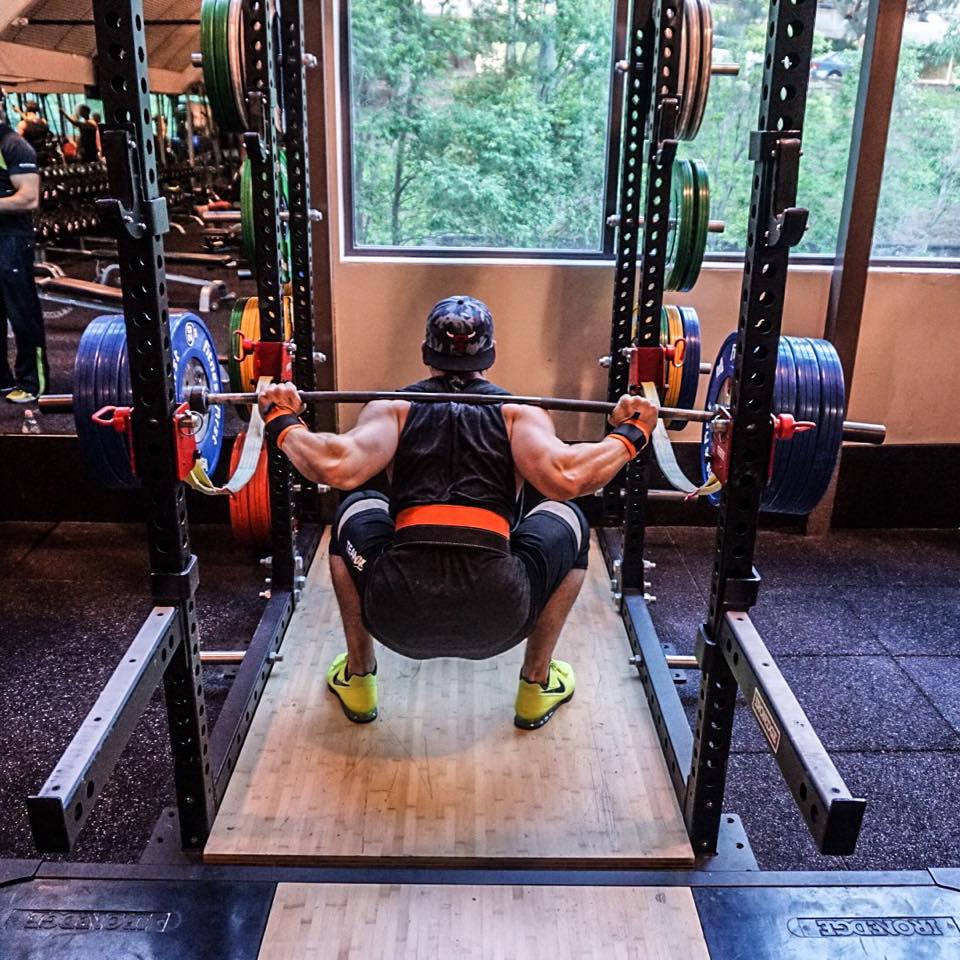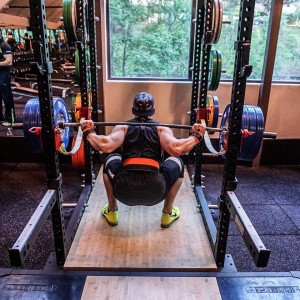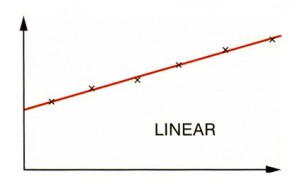Daily Undulating Periodisation for Maximum Muscle Growth
Still training a muscle group once a week?
Always working in the 8-12 rep range?
Expecting to get bigger and stronger!
Stop.
Let me introduce you to DUP.
When embarking on a training program, you should always look to get the most optimal program available to you. The program that will do this will promote power, strength, and hypertrophy. Now whilst there is no program on the globe that really can be considered an optimal protocol, the DUP training system will challenge your body consistently and present a style of training more conducive to progress than almost any other.
What is the DUP System?
Splitting up the initials, the DUP system is really quite self-explanatory:
D – Daily: Each day you train.
U – Undulating: The variety in which your loads/reps/intensities will change per session.
P – Periodisation: How you plan your training over time, with view to get stronger, increasing weights as you go.
As you’re reading this article, I’m guessing that you’re pretty well-read in the fitness world. Training interests you, along with nutrition and maintaining health. So you’re probably very familiar with the common linear periodisation programing. If not, it’s very simple to understand. You might go through a periodisation of hypertrophy, strength, and power, normally in that order, in blocks consisting of 4-6 weeks on average. Training volume usually starts high, and then decreases over time. Due to minimal changes in volume and intensity during these blocks, there’s reduced recruitment of motor units.
Linear programing could be losing you strength.
Our body recruits high threshold motor units, and low threshold motor units when we train. It’s the high threshold motor units that helps to grow more muscle and make us stronger. When we train in a linear fashion, our abilities to produce high threshold motor units becomes inefficient, because the strength work that recruits these is limited to just 4 weeks in every 12.
DUP “undulates”, or varies, volume and intensity daily. Every single training session offers varied volume and intensity. The concept of DUP can be designed in endless ways, and can be designed to suit a whole array of goals.
Design for high volume for maximal muscle growth.
Despite traditional linear designs conforming to high intensity per session, and sometimes high volume, DUP offers high volume over time. It’s increasing this volume over time that is the crucial factor for hypertrophy.
The benefit with training high volume over time, is that you hugely reduce the risk of overtraining. Typical bodybuilding linear designs promote high intensity training in short blocks. So intensity remains high throughout, and volume remains high throughout.
The key is to now focus on volume for what it actually is, and not for what many perceive it being in numbers of sets, reps, and exercises per session.
VOLUME = TOTAL REPS X LOAD
This volume can be viewed over just one session, or for the whole training week. So by working the DUP system, you’ll likely be getting a far greater total weekly volume, than a one-day a week training split.
Gone are the week long rest days post leg session!
Protein synthesis, the rate at which muscle repairs, peaks at around 24 hours, and is usually back to normal levels around 36 hours after the training session.
Ensuring that you train your body parts more than once a week, as per traditional bodybuilding templates, you’re maximising your body’s ability to produce more motor units. This leads to stronger, more powerful body’s in the gym!
Keep it simple, stupid.
It’s very easy to go overboard with DUP. Training multiple times a week could invite gym advocates to go and smash out sessions every day of the week. Focusing on the different rep ranges and loads, with many exercises, could result you spending more time in the gym than in your day job!
So I’ve produced a simplified DUP program template, which follows all the concepts of what I’ve discussed, only involves you training 4 times a week, and your time in the gym would be around 60-minutes maximum. Of course, you could always add additional work in to either the sessions below, or the training week in general.
Week 1
#1 Training day
Bench press – 6 sets – 3 reps – 70%1RM
Back squat – 5 sets – 5 reps – 80%1RM
Deadlift – 4 sets – 6 reps – 75%1RM
#2 Training day
Back squat – 6 sets – 3 reps – 70%1RM
Deadlift – 5 sets – 5 reps – 80%1RM
Bench press – 4 sets – 8 reps – 70%1RM
#3 Training day
Deadlift – 6 sets – 3 reps – 70%1RM
Bench press – 5 sets – 5 reps – 80%1RM
Back squat – 4 sets – 8 reps – 70%1RM
#4 Training day 4
Chin-ups – 4 sets – 8 reps – RPE8
Bent over row – 4 sets – 8 reps – RPE8
Single arm DB row – 3 sets – 10 reps per arm – RPE8
Calf raises – 4 sets – 15 reps – RPE9
EZ Bar curls – 3 sets – 12 reps – RPE9
Tricep pushdowns – 3 sets – 12 reps – RPE9
Week 2
#1 Training day
Bench press – 6 sets – 3 reps – 70%1RM
Back squat – 5 sets – 5 reps – 80%1RM + 5kg
Deadlift – 4 sets – 6 reps – 75%1RM +2.5kg
#2 Training day
Back squat – 6 sets – 3 reps – 70%1RM
Deadlift – 5 sets – 5 reps – 80%1RM +5kg
Bench press – 4 sets – 8 reps – 70%1RM +2.5kg
#3 Training day
Deadlift – 6 sets – 3 reps – 70%1RM
Bench press – 5 sets – 5 reps – 80%1RM + 5kg
Back squat – 4 sets – 8 reps – 70%1RM +2.5kg
#4 Training day 4
Chin-ups – 4 sets – 8 reps – RPE8
Bent over row – 4 sets – 8 reps – RPE8
Single arm DB row – 3 sets – 10 reps per arm – RPE8
Calf raises – 4 sets – 15 reps – RPE9
EZ Bar curls – 3 sets – 12 reps – RPE9
Tricep pushdowns – 3 sets – 12 reps – RPE9
Week 3
#1 Training day
Bench press – 6 sets – 3 reps – 70%1RM
Back squat – 5 sets – 5 reps – 80%1RM + 7.5kg
Deadlift – 4 sets – 6 reps – 75%1RM + 5kg
#2 Training day
Back squat – 6 sets – 3 reps – 70%1RM
Deadlift – 5 sets – 5 reps – 80%1RM +7.5kg
Bench press – 4 sets – 8 reps – 70%1RM +5kg
#3 Training day
Deadlift – 6 sets – 3 reps – 70%1RM
Bench press – 5 sets – 5 reps – 80%1RM + 7.5kg
Back squat – 4 sets – 8 reps – 70%1RM +5kg
#4 Training day 4
Chin-ups – 4 sets – 8 reps – RPE8
Bent over row – 4 sets – 8 reps – RPE8
Single arm DB row – 3 sets – 10 reps per arm – RPE8
Calf raises – 4 sets – 15 reps – RPE9
EZ Bar curls – 3 sets – 12 reps – RPE9
Tricep pushdowns – 3 sets – 12 reps – RPE9
The principles of this DUP training design are to follow the power first, strength in the middle, and hypertrophy at the end of the session. With focusing on power first, I encourage that focus should be on generating maximal force with perfect lifting technique.
To comply with the % of your 1RM, you can either make a conservative guess at this number, or use accurate percentages, should you already know your maximal lifts. I’d recommend taking a further 10% off your 1RM before applying the above training load guidelines. It’s better to start off a little lighter and adjust as you go, than too heavy and failing reps. Training to failure in time will likely lead to a reduction in volume, so instead focus on increasing volume rather than maxing out for sets and reps each time you’re in the gym.
Don’t impede your 3 DUP sessions by maxing out on the hypertrophy accessory day either. This day is designed with exercises to complement your main lifts, and you’ll be stimulating enough muscle fibres working within the RPE scale advised, for muscle growth. As a rough guide, working RPE 8 would ensure that you have 2 more reps in the tank and working in RPE9, would ensure you have 1 more rep left in the tank. You might like to consider hitting this accessory workout twice through the week if you’re wanting to train more than four times.
Cycle your session!
The program is designed as a 3-week set-up. Week 1 is pretty straightforward. Week-2 challenges you more, and week-3 is pretty tough going.
Deload for 1 week after each cycle, by bring your strength and hypertrophy loads down to 50% 1RM. Keep your power load the same.
Each cycle has potential to add more load, but the amounts will very much depend on how you found the final week of the periodisation. If it was challenging, I’d suggest to make these loads your starting load for week 1 of cycle 2. If they were too easy, then add 10kg to your squat and deadlift, and 5kg to your bench. If they were ok, but quite tough, add 5kg to your squat and deadlift, and 2.5kg to your bench. Apply these principles to cycle number 3 also.
After 3 cycles you could test your 1 rep max for these lifts, but I wouldn’t recommend it before this time. Alternatively, continue to increase voume over time – there’s no real need to consistently re-test or to re-test at all so long as volume is increasing over time.
If you can’t quite manage the added weight each week, don’t worry – you can always add an extra rep instead, as for some people, adding 7.5kg on a perceived 80% might make meeting reps impossible.
To wrap up, DUP offers the following:
- A design with a variety of reps ranges.
- A design with a variety of intensities.
- A design where you’ll be training a muscle group more than once a week.
- Design depending, you could be training the same exercises on consecutive days.
- A design with a limited number of exercises.
- A design where you could be training for power, strength, and endurance, all in one session.
Remember, DUP isn’t a fixed system. The routine I’ve provided you with incorporates the 3 main lifts, with some accessory to work to complement. If you find you need to perform one of the lifts more frequently, due to weakness in this area, then do it! Similarly if you’re wanting to add some additional accessory work to further support a specific lift or to assist with further development of a particular muscle, go for it.
The beauty of DUP is that it can be designed to accommodate any training goal and promotes more benefits than a straight forward linear periodisation block.
Take up a pew now, grab a note book and ask yourself this question;
“What is optimal for me?”
Based on these answers, you can then design a DUP program specifically for your own goals. I can assure you that the design you’ll create, or the one you follow in this article, will be far more suitable for you than a standard bodybuilding design.
Questions?
Hit me below:
Instagram – @nickcheadlefitness
Facebook – Facebook.com/nickcheadlefitness
Email – [email protected]
Blog & Website – nickcheadlefitness.com







